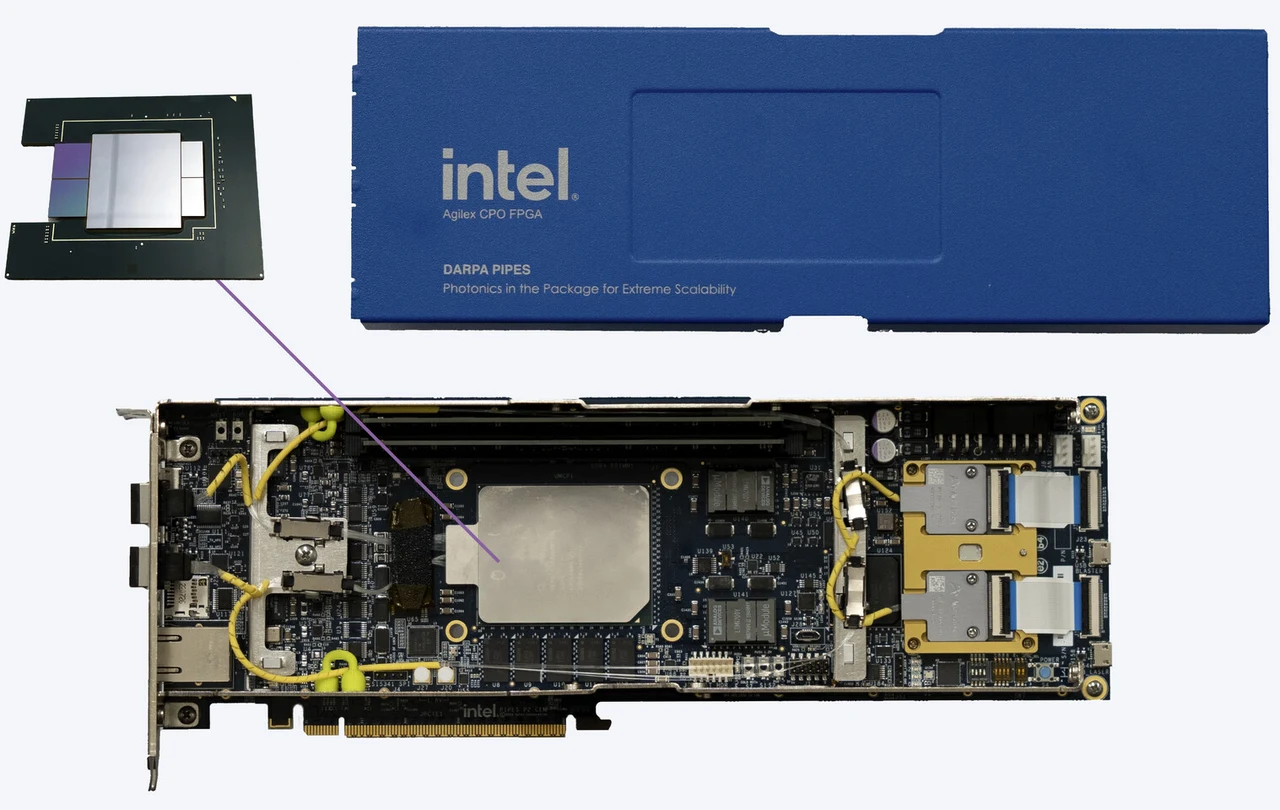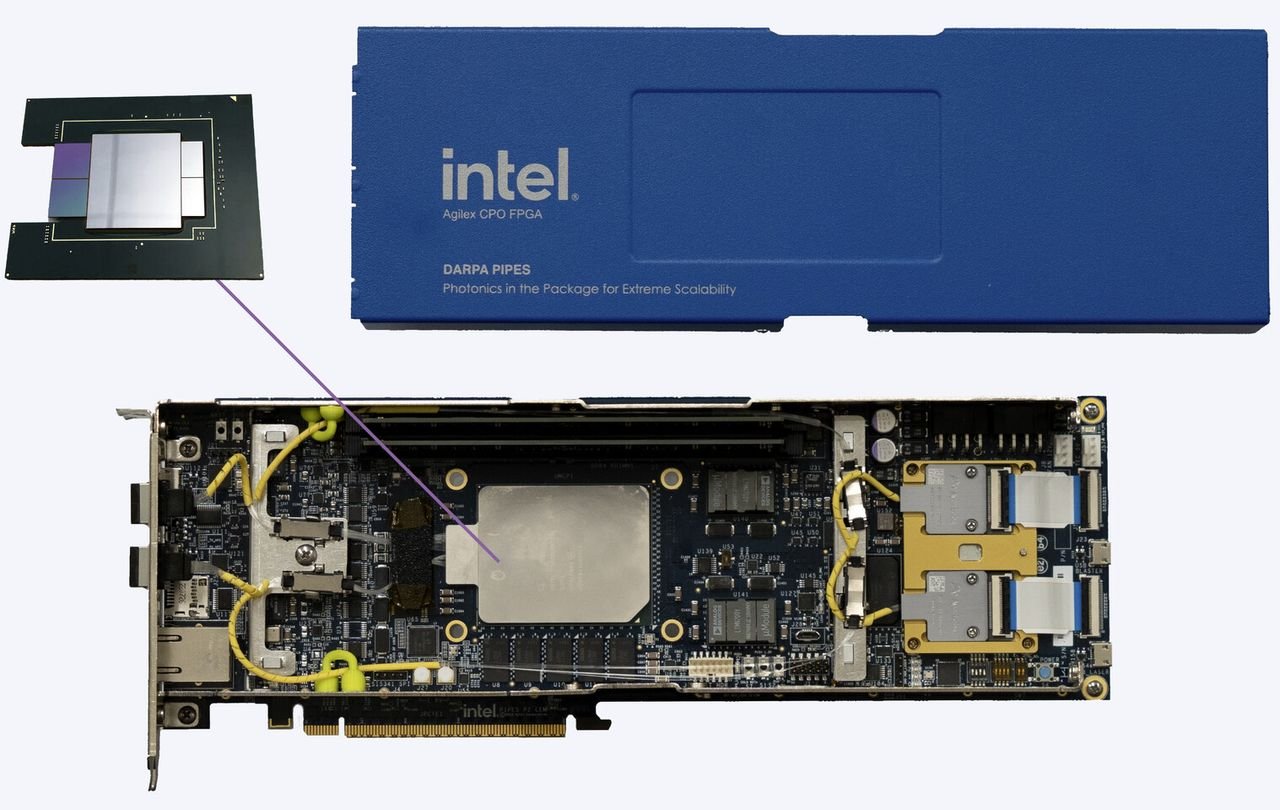
Ayar Labs, a leader in the field of silicon photonics, is gearing up to showcase its innovative optical I/O solution, which is seamlessly integrated with Intel’s Agilex FPGA technology, at the prestigious Supercomputing 2023 event. This optical FPGA, which boasts a bandwidth that is five times greater than the current industry standard, and operates at significantly lower power and latency, holds the promise of a paradigm shift in high-performance computing (HPC). It is particularly suited for data-intensive workloads such as artificial intelligence (AI) and machine learning, and is also well-positioned to usher in a new era of disaggregated compute and memory architectures.
Supercomputing 2023
The optical I/O solution developed by Ayar Labs is a key element of this optical FPGA and stands as a testament to the transformative power of silicon photonics. This cutting-edge technology, which harnesses the power of light to transmit data at high speeds, is a critical component for chip-to-chip connectivity. The optical I/O solution facilitates high-speed data transfer, a vital requirement for managing data-intensive workloads in HPC environments, thereby enhancing efficiency and performance.
The successful integration of Ayar Labs’ optical I/O solution with Intel’s Agilex FPGA technology marks a significant milestone in the evolution of HPC. FPGA, or Field Programmable Gate Array, is a technology that enables flexible hardware, making it adaptable to a wide range of tasks. Intel’s Agilex FPGA technology, specifically, is constructed on a 10 nm FPGA fabric die, a core fabric that forms the backbone of Intel’s Agilex FPGAs. This integration culminates in an optical FPGA that comprises two TeraPHY optical I/O chiplets, each capable of delivering a bi-directional bandwidth of 4 Tbps.
Intel FPGA
The optical communication within this FPGA is driven by two SuperNova light sources, which support 64 optical channels. These light sources are fundamental to the high-speed, error-free communication that the optical FPGA provides. The SuperNova light sources, in conjunction with the TeraPHY optical I/O chiplets, are part of the burgeoning chiplet ecosystem, a network of small, high-speed data transfer components that are revolutionizing data communication.
The optical FPGA also reaps the benefits of disaggregated compute and memory architectures. These architectures separate the processing and memory units, thereby enhancing performance and leading to designs that are disaggregated and pooled. Such designs are particularly advantageous for heterogeneous compute systems, where different types of processors are employed, and unified memory architectures, where different processors can access the same physical memory.
The optical FPGA developed by Ayar Labs is more than just a product; it is a vision of the future of HPC. It embodies a long-term roadmap of breakthrough performance and strategic partnerships, including a collaboration with GlobalFoundries on their Fotonix monolithic silicon photonics platform. The optical I/O solution also plays a pivotal role in advancing system designs and enabling emerging disaggregated designs.
Hyperion Research has conducted an in-depth study on the impact of optical I/O on HPC system architecture challenges. Their findings highlight the potential of Ayar Labs’ optical FPGA to bring about a transformation in the HPC landscape. This transformation will be further delved into during Ayar Labs’ activities at Supercomputing 2023.
Ayar Labs’ optical FPGA, with its integration of silicon photonics and Intel’s Agilex FPGA technology, signifies a substantial leap forward in HPC. Its enhanced bandwidth, lower power, and reduced latency could revolutionize data-intensive workloads, paving the way for advancements in AI, machine learning, and disaggregated compute and memory architectures. As Ayar Labs gears up to present this groundbreaking technology at Supercomputing 2023, the future of HPC appears to be on the cusp of a new era of innovation and progress.
Filed Under: Technology News, Top News
Latest timeswonderful Deals
Disclosure: Some of our articles include affiliate links. If you buy something through one of these links, timeswonderful may earn an affiliate commission. Learn about our Disclosure Policy.

